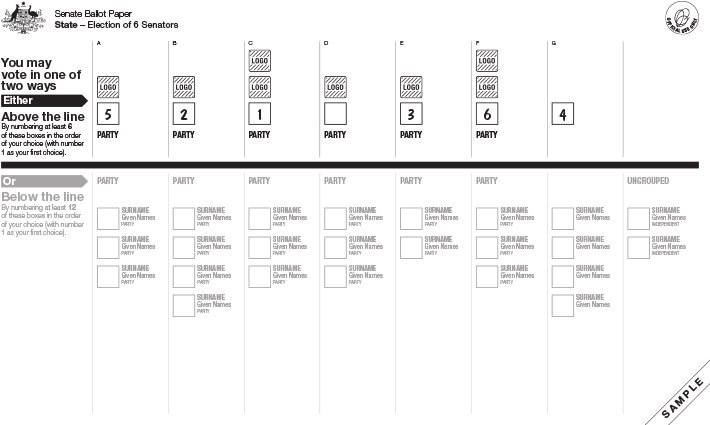How are Senate below the line votes directed? What if none of a voter's 12 preferences gets a quota?
Thanks for asking, Geoff. To best answer your question we’ll begin with a quick refresher on Senate elections.
To complete a Senate ballot paper, voters need to either number at least 6 boxes above the line or number at least 12 boxes below the line. To be elected, candidates need to gain a quota – a set proportion of the formal votes.
If a candidate receives more than the required quota, these 'extra' votes are then distributed to the second choice on the ballot paper. These ballot papers are distributed to the remaining candidates, based on preferences and the votes are recounted. This process repeats then until all vacancies in the Senate are filled.
For some voters, this may result in their vote being considered 'exhausted'. This is when all of their preferred candidates have been excluded and there are no preferences remaining on their ballot. When an 'exhausted vote' occurs the ballot paper is set aside.
Sample Senate ballot paper – voting above the line

Australian Electoral Commission
Description
This image is of a sample Senate ballot paper showing how to cast a valid vote above the line. There is a printed black horizontal line through the ballot paper. There are 7 boxes with 'Party' written above the line. These boxes have been numbered 1 to 6, one box has been left blank. There are many boxes with 'Surname, Given names, party' written below the line. All the boxes below the line have been left blank.
Permission should be sought from the Australian Electoral Commission (AEC) for third-party or commercial uses of this image. To contact the AEC email: media@aec.gov.au or phone: 13 23 26.